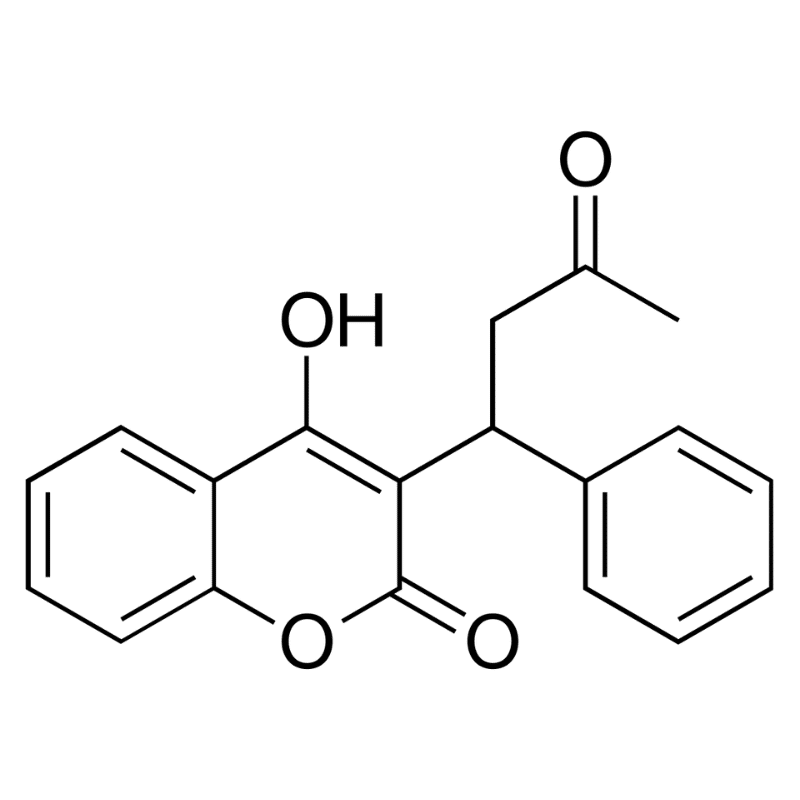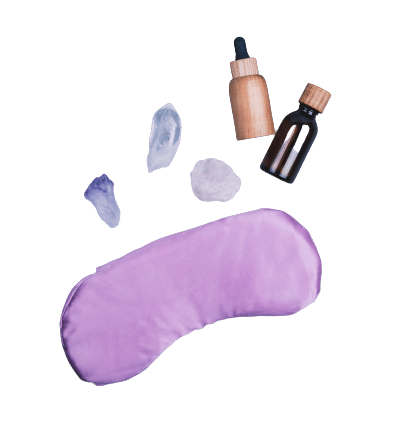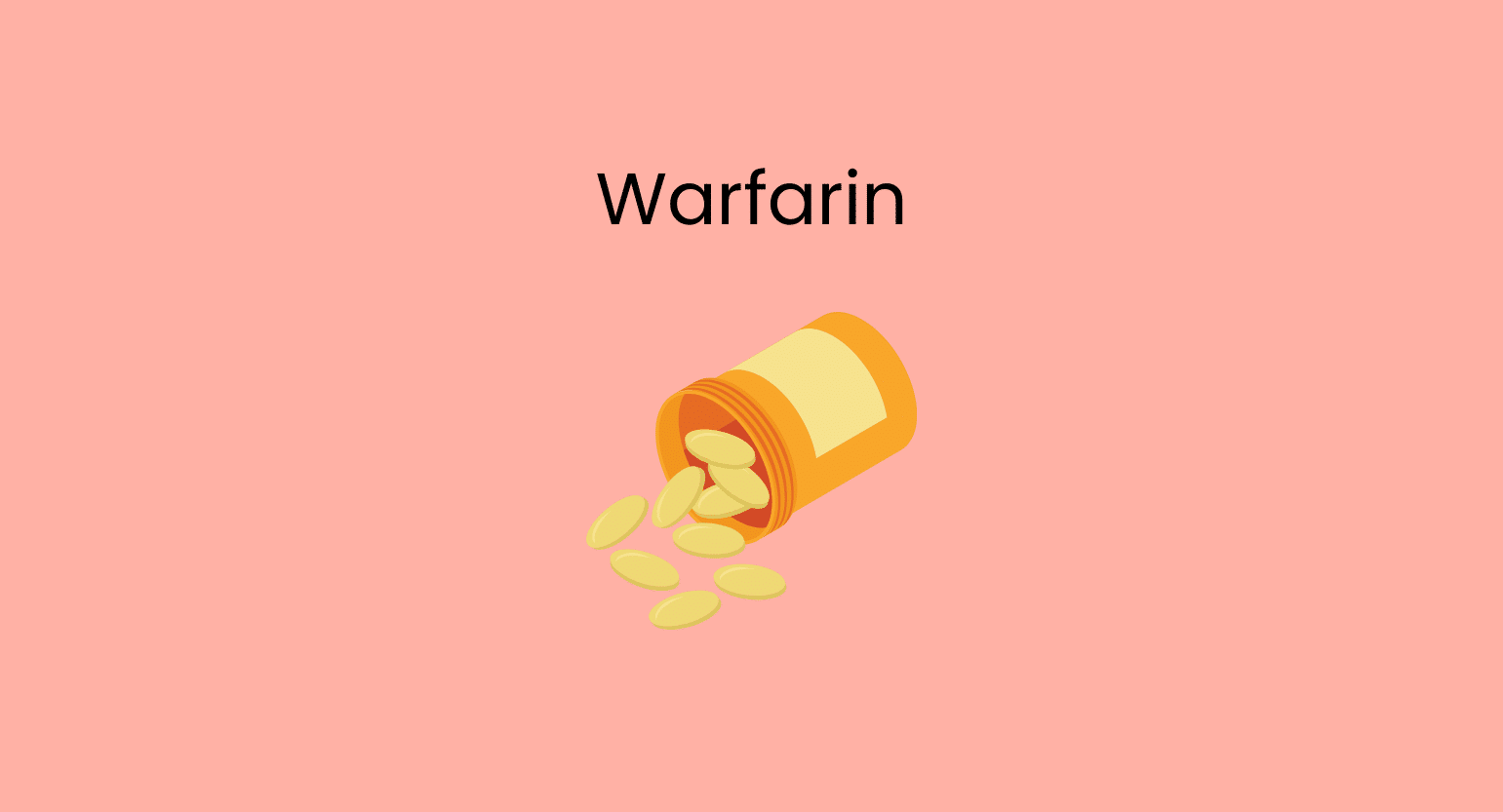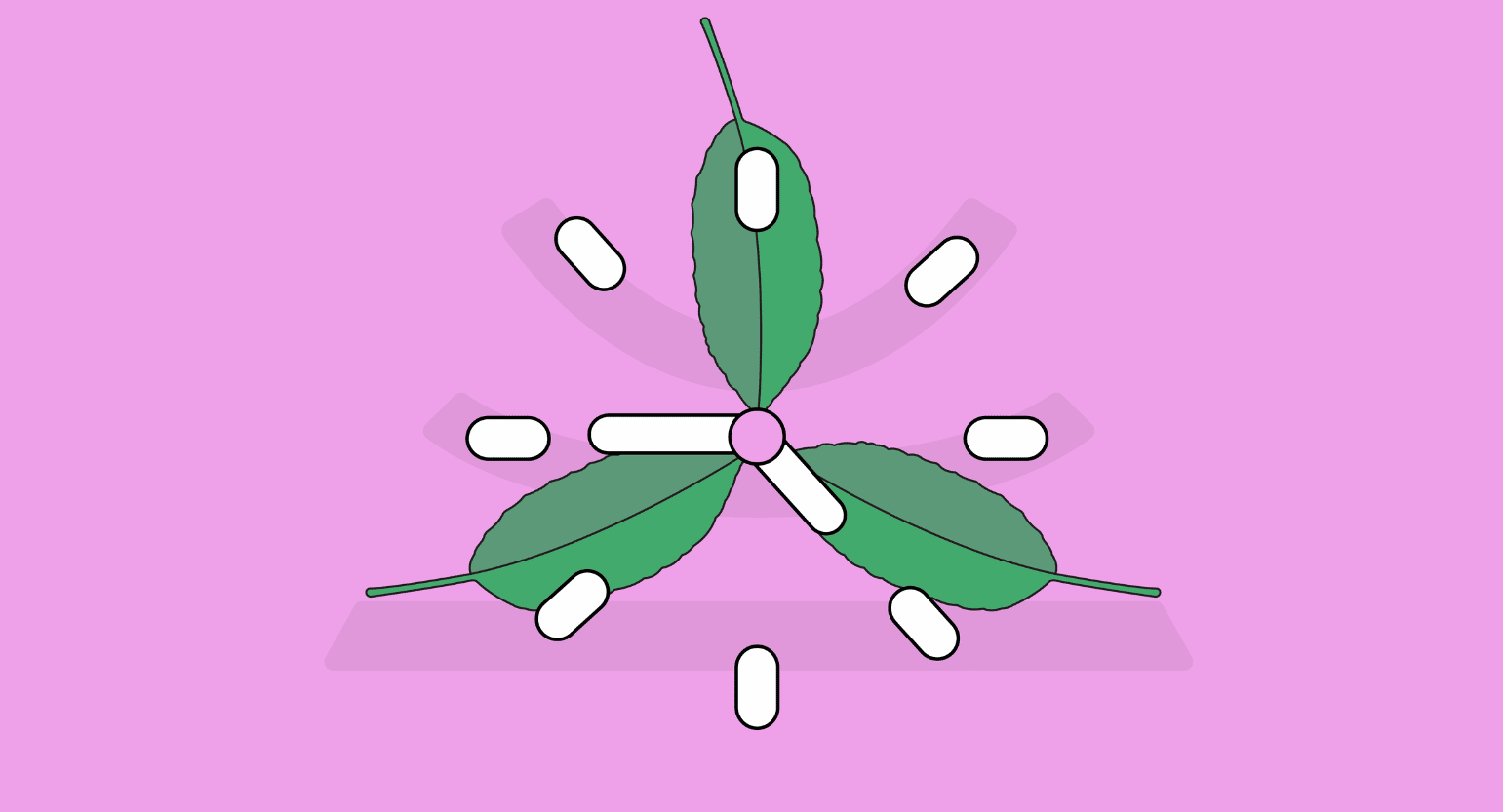Does Kratom Interact With Warfarin?
Yes, taking kratom and warfarin has a significant metabolic interaction risk.
The FDA has warned that concomitant use of CYP2C9, 1A2, or 3A4 inhibitors may alter warfarin’s concentration in the blood. And since kratom is known to have inhibitory effects on CYP2D6 and CYP3A4, this combination will decrease the warfarin metabolism rate [1].
Warfarin is an anticoagulant drug commonly used to prevent heart attacks and strokes. However, an increased or prolonged concentration of warfarin in the body will increase the risk of bleeding.
Mixing kratom and warfarin would undoubtedly interfere with the appropriate functioning of warfarin. This pharmacological interaction is known as metabolic inhibition.
Is it Safe to Take Kratom With Warfarin?
No, the metabolic interaction between kratom and warfarin can hinder the appropriate functioning of the drug and lead to an increased incidence of adverse effects.
It should also be noted that warfarin’s side effects are incredibly dangerous. For instance, the FDA has warned that fatal hemorrhages are common.
You should abstain from taking kratom — and all other CYP2C9, 1A2, and 3A4 inhibitors/inducers — while on warfarin.

What is Warfarin?
Warfarin is a prescription-only anticoagulant (blood thinner). It’s commonly used among those who have atrial fibrillation (abnormal heart rhythm), valvular heart disease, or artificial heart valves. Warfarin is typically taken by mouth but can also be injected into a vein.
Warfarin works by blocking the vitamin K enzyme, which decreases the body’s ability to produce clotting factors. This effectively lowers the chance of dangerous blood clots forming and keeps existing clots from becoming larger. However, warfarin does not break up already-formed clots [2].
Dietary factors and certain medications can interact with warfarin and either decrease or increase its effectiveness [3].
It can take a couple of days for warfarin to take on full effectiveness, and the effects can last for up to five days.
Warfarin Specs:

| Drug Name | Warfarin |
| Trade Name | Coumadin |
| Classification | Anticoagulant |
| CYP Metabolism | CYPC29, CYP1A2, CYP3A4 |
| Interaction With Kratom | Metabolic Inhibition |
| Risk of Interaction | Medium to High |
What is Warfarin Used for?
The FDA has approved warfarin for the following indications:
- Prophylaxis and treatment of venous thrombosis and its extension, pulmonary embolism.
- Prophylaxis and treatment of thromboembolic complications associated with atrial fibrillation or cardiac valve replacement.
- Reduction in the risk of death, recurrent myocardial infarction, and thromboembolic events such as stroke or systemic embolization after myocardial infarction.
Generic & Brand Name Versions
Warfarin is available under the following brand names:
- Coumadin
- Jantoven

What’s the Dose of Warfarin?
Since warfarin is known to interact with many foods and medications, determining the proper dosage can be a complicated task and should only be done by a medical professional [4].
During the initial stages of treatment, it is necessary to closely evaluate the degree of anticoagulation through blood tests that measure INR (international normalized ratio) — a measure designed to ascertain the performance of a common coagulation pathway.
There are also additional complicating factors, such as genetics, which is why the dosing regimen for warfarin is highly individualized. You should only start taking warfarin after a physician has determined the appropriate dosage.
Do not alter your warfarin dosing regimen —only take it following your prescription.
What Are the Side Effects of Warfarin?
The most common side effect of warfarin is bleeding. The use of warfarin makes bleeding of all types more common; this may entail something like nose bleeds, but it can also mean more severe cases such as intracerebral hemorrhage or hemorrhagic stroke [2].
The FDA has identified these rarer but more severe side effects include:
- Acute kidney injury
- Calciphylaxis
- Cholesterol microemboli
- Purple toes syndrome
- Systemic atheroemboli
- Warfarin-induced skin necrosis
There are also several contraindications to taking warfarin:
- Hemorrahagic tendencia or blood dyscrasias
- Malignant hypertension
- Pregnancy
- Recent or contemplated surgery of the CNS, or traumatic surgery resulting in large open surface areas
- Spinal puncture
- Threatened abortion

What is Kratom?
Kratom is a herbal product derived from the leaves of the kratom tree (Mitragyna speciosa).
This all-natural product has recently become immensely popular in the US and the wider western world — although indigenous peoples and native farmers in Southeast Asia have used it as traditional medicine for a long time.
Kratom’s popularity stems from the many beneficial properties that it can provide. It is a great natural pain reliever and stimulant.
Unfortunately, the FDA has refused to regulate kratom, which has made it harder to research it. But even so, the kratom community is thriving in the US, and several official bodies vie for the legality of kratom, like the American Kratom Association.

What is Kratom Used for?
Farmers in Vietnam, Thailand, Indonesia, and other Southeast Asian countries have chewed kratom leaves for centuries to combat fatigue in the field.
Nowadays, kratom is mainly used for the following conditions:
- ADHD (Attention Deficit & Hyperactivity Disorder)
- Anxiety
- Arthritis pain
- Benzodiazepine withdrawal syndrome
- Chemotherapy-related pain
- Chronic back pain
- Depression
- Energy & focus
- Fibromyalgia
- Insomnia
- Migraines
- Mood
- Opiate withdrawal symptoms
- Nerve pain
- Pain
- Psoriatic arthritis
People are also using kratom during their weight-loss journey and even drinking it as a pre-workout supplement to get more energy.

What’s the Dose of Kratom?
Since kratom is a spectrum drug, finding the proper dosage can be tricky. Spectrum drugs change their profile of effects depending on the dosage.
When taken in low doses, kratom acts as a stimulant, providing increased energy and focus to the user. It even has mood-boosting effects.
In mid-to-high doses, kratom takes on more analgesic and anxiolytic qualities. These become more pronounced the higher the dosage becomes.
Kratom dosage guidelines are usually the following:
- Low dose: 2-4 g
- Medium dose 4-6 g
- High dose: 6-8 g
If you are new to kratom, it’s best to start with the lowest dose and work up until you find the desired effects. If you take too much kratom, you will likely experience side effects like headaches and nausea.
We also recommend taking tolerance breaks every 1 or 2 days to avoid dependence.
What Are the Side Effects of Kratom?
The most common side effects of kratom include:
- Anxiety or restlessness
- Constipation
- Diarrhea
- Dizziness
- Depression
- Frequent urination
- Headaches
- Heart palpitations
- High blood pressure
- Liver damage (with long-term use)
- Low libido
- Nausea and vomiting
- Numbness
- Sedation and prolonged sleepiness
- Withdrawal symptoms
- The Wobbles
Also, kratom has the potential to cause physical and mental dependence. To hedge against this risk, avoid taking large doses of kratom regularly.
Finally, adverse effects are linked to higher doses of kratom.
Also see: Is Kratom Bad for the Heart?

What Are the Different Types of Kratom?
Kratom is available for purchase in a wide range of distinct strains.
These variations usually refer to the ‘type’ of kratom strain and the region where it was grown.
The alkaloid profiles possibly arise because of differences in the harvesting methods and soil composition used by local farmers in Southeast Asia.
It’s important to understand that all kratom strains share the same benefits. The difference lies in how each strain emphasizes different aspects of the primary kratom spectrum.

White Vein Kratom
If you want to feel the stimulant-like effects of a low dose of kratom, then white vein kratom is your best bet.
This is a great option to replace your morning coffee!

Red Vein Kratom
Red vein kratom is favored by those who have anxiety or are dealing with chronic pain because they excel at providing the effects of a mid-to-high dose of kratom.
The kratom community is filled with stories of people who have abandoned their risky pharmacological prescriptions for the healing power of kratom.

Green Vein Kratom
Green vein kratom is in the middle of the kratom spectrum. Instead of providing the targeted experience of a white or red strain, it excels at giving users a pleasant and balanced kratom experience.

Yellow Vein Kratom
Yellow-vein kratom doesn’t have any particular qualities except that it is the less potent out of all the strains. In other respects, it’s similar to green.
Go with a yellow-veined strain if you’re a first-timer or have a particular sensitivity to kratom.

Key Takeaways: Is it Safe to Mix Kratom & Warfarin?
No — considering the potential seriousness of warfarin’s side effects and the importance of attaining specific measures to determine the proper dosage — this is a combination that is best avoided.
When determining your warfarin prescription, you should tell your doctor about all the substances you typically use, including kratom.
If you need to replace kratom with another substance, consult with your doctor to see what other drugs you may take that will not affect your prescription.
- Hanapi, N. A., Ismail, S., & Mansor, S. M. (2013). Inhibitory effect of mitragynine on human cytochrome P450 enzyme activities. Pharmacognosy Research, 5(4), 241.
- Patel, S., Singh, R., Preuss, C. V., & Patel, N. (2021). Warfarin. StatPearls.
- Ageno, W., Gallus, A. S., Wittkowsky, A., Crowther, M., Hylek, E. M., & Palareti, G. (2012). Oral anticoagulant therapy: antithrombotic therapy and prevention of thrombosis: American College of Chest Physicians evidence-based clinical practice guidelines. Chest, 141(2), e44S-e88S.
- Holbrook, A. M., Pereira, J. A., Labiris, R., McDonald, H., Douketis, J. D., Crowther, M., & Wells, P. S. (2005). Systematic overview of warfarin and its drug and food interactions. Archives of internal medicine, 165(10), 1095-1106.









